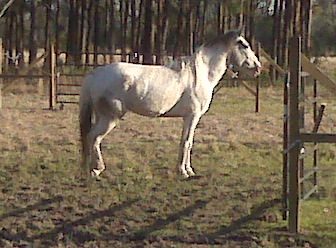- Thread starter
- #301
- Jun 14, 2009
- 1,735
- 32
- 161
Farrier showed up minutes after my post this morning.
He did a neat quick job, Cody's feet are done up good.
Maybe not quite all the people skills of my original farrier, but he did take the time to buddy up with Cody. So I guess in the long run that's what he was suppose to do. He was their for the horse, not me.
He did a neat quick job, Cody's feet are done up good.
Maybe not quite all the people skills of my original farrier, but he did take the time to buddy up with Cody. So I guess in the long run that's what he was suppose to do. He was their for the horse, not me.


